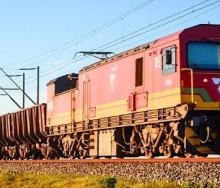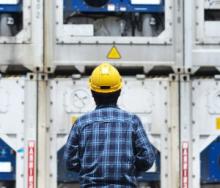APM Terminals Rotterdam set a new terminal productivity record when handling the Maersk Mc-Kinney Moller - the largest container ship in the world and first of 20 Triple E-class 18 000 TEU capacity sister vessels – when she called on her maiden voyage.
At 400 metres (nearly half a kilometre) in length and 59m wide, it is the largest vessel currently afloat of any kind, reaching 73m in height (as tall as a 24-storie building).
A report sent to FTWO by APM Terminals Europe portfolio manager, Ben Vree, said the new terminal productivity record on the vessel was berth productivity of 215 gross moves per hour (MPH) and crane productivity of 37.1 gross moves per hour.
APM’s Rotterdam operations include the current terminal, which is equipped with 13 post-Panamax ship-to-shore (STS) cranes with a 22-container wide reach. Added to that will be the new automated Maasvlakte II terminal. It is scheduled to open next year as the world’s most technologically-advanced container terminal, providing a very high level of crane and yard automation as well as neutral CO2 emissions.
APM Rotterdam is one of the largest container terminals in Europe, handling 2.5 million TEUs in 2012 in Europe’s busiest container port - currently ranked 12th globally with 11.8 million TEUs handled last year.
A recent productivity study released by the JOC Group named APM Terminals Rotterdam as the top terminal in Europe as measured by productivity in crane MPH, with 92 with a vessel alongside. In addition to ranking first in the JOC study’s Europe/Middle East/African region, APM Terminals Rotterdam ranked 11th globally among terminals in overall productivity, and 5th globally when working vessels of 8 000 TEU capacity and above, with 112 MPH.
The new APM Terminals Rotterdam Maasvlakte II facility will open with eight remote-controlled super post-Panamax STS cranes - the world’s first. It will have an annual throughput capacity of 2.7 million TEUs, with the capability of expanding to 4.5 million TEUs at full build-out.












